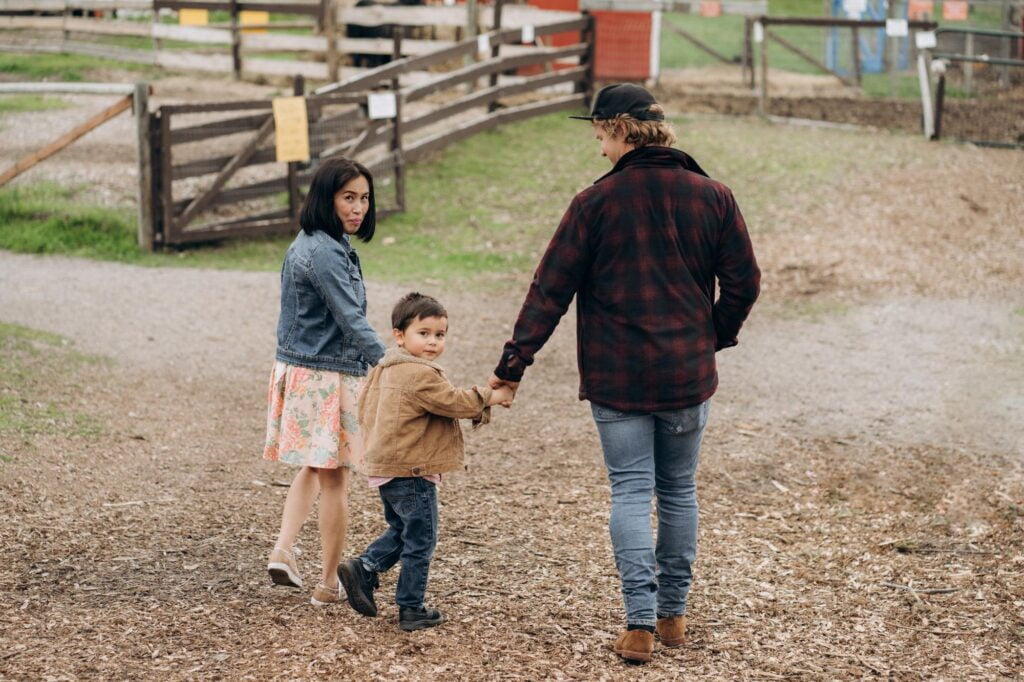
In many other cultures worldwide, how people raise their children is taught from generation to generation. Instead of reading books, parents learn to read their children by what they do and say.
Children’s upbringing in the West is based on teaching them to be independent. This fits in with the way our society is set up. On the other hand, other cultures have a more “collectivist mindset” and think giving kids a sense of security and attachment will help them become independent in the long run. Even though “attachment parenting” is becoming more popular in the West, we still do things differently. Read on to learn how we raise our kids, intending to make them independent.
Nursery Sleeping vs. Co-Sleeping
If I could go back to when I was a new mum twelve years ago, there are some things I would do differently.
I put my first child in a cot in the nursery from the day she was born. My husband and I did try the old “cry it out” method. It wasn’t normal for me to hear my baby cry. Instead of going with my gut, I did what a book told me to do about reasoning and sleep training—all to help my baby become more independent. Babies usually sleep in cribs or bassinets next to their parents’ beds for at least the first six months.
But babies are usually put to sleep alone in a nursery after this time. While most mothers outside of the West sleep with their babies, most women in the West do not. They do this until the babies are old enough to be weaned and even after that. Parents can sleep with their kids in several different ways.
Infants are put in a hammock adjacent to the bed or a wicker basket in the center of the bed between the two parents in the Philippines, Vietnam, and South America. Many Japanese parents sleep on futons or bamboo mats on the floor next to their babies. In India, it is a strong tradition for families to sleep in the same beds for years.
Babywearing vs. crates and baby capsules
No question that is pushing a pram around the store or putting a baby in a car capsule is both easy ways to get around. But, it does seem odd that a baby who has always been a part of their mother’s body is now abruptly cut off from them. In places outside of the West, babywearing is more common. Over the past 20 years, babywearing has become more common, but it has been the traditional way to move babies worldwide for thousands of years. From Mexico to Mozambique, there are many different ways to carry a baby, such as using slings, wrapping the child around the chest or back, and tying them to the side with baskets.
This is a common way for mothers to carry their babies so they can keep them safe while they do work like weaving or harvesting. Even though we don’t have to worry about safety or work as hard as parents in low-income countries, babywearing helps parents and babies bond and has a calming effect immediately.
When my second kid was a baby, she cried every time I set her down, even in the pram. By that time, I was more in tune with my instincts as a mother, so I didn’t listen to the advice of a well-meaning neighbor who said, “If you pick up your baby every time she cries, you’ll spoil her.” I put her in a baby sling, and she would fall asleep as soon as she was there.
Raising A Child Alone Vs. With A Group
It is common knowledge that it takes a community to raise a kid. In many Western countries, people don’t live in groups like they used to. Families with more than one generation rarely live together. Most of the time, first-time parents are on their own.
As our parents resided hundreds of kilometers away, my husband and I had to learn how to fend for ourselves. We may have been able to do things “our” way, but there were times when I would have liked some help from my family.
On the other hand, many people in Africa and Asia live in homes with more than one generation. Africans have a tradition of taking care of children as a group. This means that extended families or tribes take care of children. Mothers will feed children who aren’t their own if they have to. Aunts, grandmothers, and older people are always there to help new parents with advice and child care. In Asian countries like China and Vietnam, grandparents often help raise their grandchildren.
Recent research on families in numerous Asian nations has shown that encouragement, support, and role modeling may all help new moms feel more comfortable in their parental roles. Even though some things are done differently by Western parents, that doesn’t mean they are right or wrong.
Around the world, there are many different ways to raise children. This shows how different countries and cultures have different economies, ways of life, and values. All in all, parents need to figure out what works best for their family.
